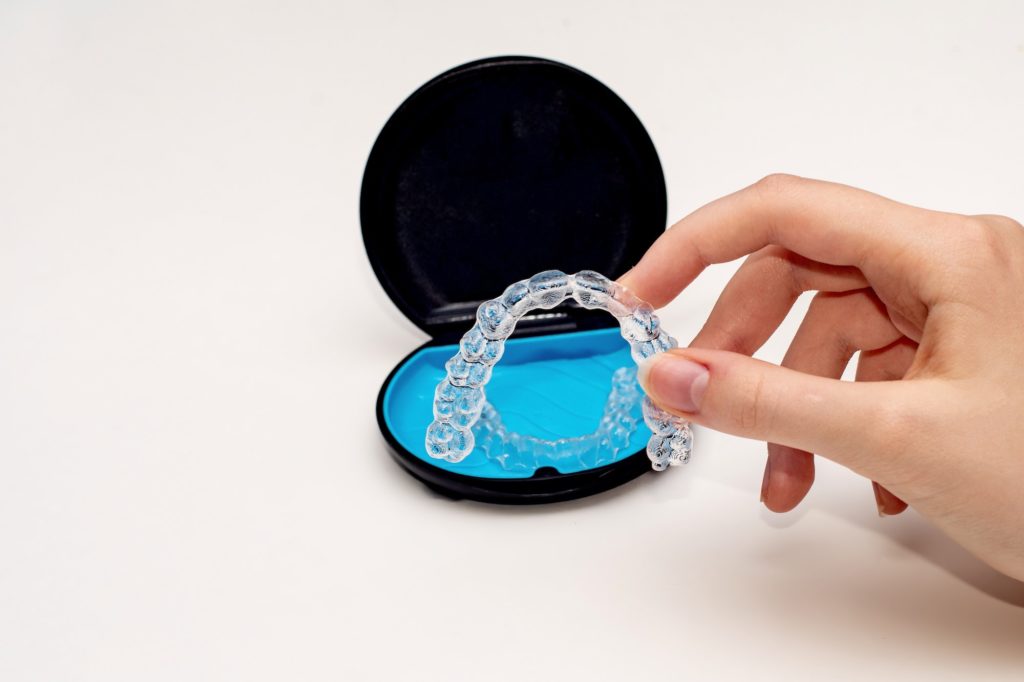What is a Dry Socket and How to Treat It

A dry socket or alveolar osteitis is a painful dental condition that can happen after having a permanent tooth extracted. Dry socket is when the clotted blood at the site of the tooth extraction doesn’t form, dislodge, or dissolve before the wound has had a chance to heal fully. It’s recommended that you see your dentist if this issue arises.
Table of Contents
What Does a Dry Socket Look Like?
After you have a tooth extraction, you should develop a blood clot in the hole or socket where the tooth used to be. It’ll look like a dark scab of dried blood. However, if you have a dry socket, the hole will be exposed, and you’ll be able to see bone, which is why it often looks white. But, sometimes bacteria or food particles may cover it. In those cases, a dry socket might look black, green, or yellow. Doesn’t sound too appetizing, does it? That’s why self-care is so important, and you’ll need to stick to your doctor’s instructions after tooth extraction.
What Does a Dry Socket Feel Like?

In the days following the loss of a tooth, removal, or extraction — the main symptom is pain in the jaw or mouth. The pain and discomfort may be accompanied by bad breath. In some cases, there may also be pus or swelling accompanying the pain and/or bad breath. Many people experience them at the site of wisdom tooth extraction due to improper self-care post-procedure.
How Do You Treat a Dry Socket?
As with any medical issue, you should get a professional diagnosis from your dentist. Dry socket treatments can include pain medications, including analgesic pain relievers, nonsteroidal anti-inflammatory drugs to reduce inflammation, lower fever, and relieve pain, topical antiseptics to destroy and prevent the growth of microorganisms that cause infection, antibiotics to kill bacteria, and dietary supplements to promote immune health. Your oral self-care should include cleaning your mouth by flushing the affected area, brushing, flossing, and using mouthwash regularly.
Dry Socket FAQs
Alveolar osteitis, sometimes called dry socket, is a painful illness that can develop following a tooth extraction treatment. When a tooth is pulled out, a blood clot forms in the socket to safeguard the nerves and bone beneath while the wound heals.
However, in some cases, this blood clot can become dislodged or dissolve before the healing process is complete, leaving the socket exposed and vulnerable.
Dry socket is primarily caused by the premature dislodgment or dissolution of the blood clot that forms after a tooth extraction. The blood clot protects the underlying bone and nerves as the extraction site heals. Certain factors can increase the risk, including smoking, poor oral hygiene, trauma to the extraction site, and systemic conditions.
It is important to follow post-extraction care instructions provided by the dentist to minimize the risk of developing this painful condition.
When the blood clot that usually fills the socket after a tooth extraction moves or dissolves too soon, a dry socket develops. Usually, after a tooth is extracted, a blood clot forms in the socket to protect the underlying bone and nerves as the area heals. However, if the blood clot is disturbed or dislodged, the socket is left exposed. This exposure can result from smoking, poor oral hygiene, excessive rinsing or spitting, straw use, or extraction site trauma.
Without the protective blood clot, the underlying bone and nerves are exposed to air, food particles, and bacteria, causing significant pain and delaying healing.
A dry socket typically does not heal on its own, and medical intervention is usually required for proper healing. The condition can be painful and may prolong the recovery period after tooth extraction. Without treatment, the exposed socket remains vulnerable to infection and further complications.
To promote healing, dentists often clean the socket to remove debris, apply a medicated dressing to alleviate pain, and provide appropriate pain medication and antibacterial rinses. Following the dentist’s instructions for aftercare and maintaining good oral hygiene is crucial to ensure the socket heals properly and without complications.
